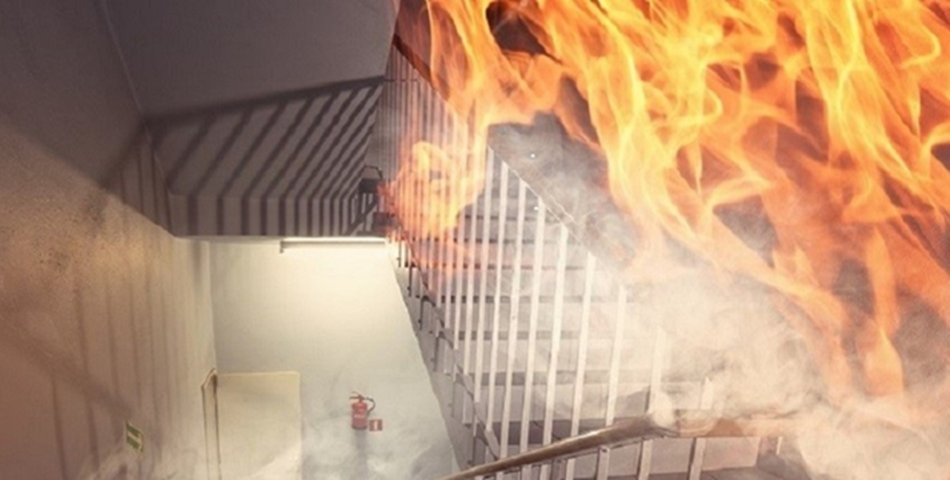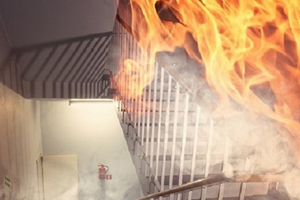Fire can cause death and destruction of lives, property and mission. For people, injury or death can occur by means of thermal exposures that results in burns or by the inhalation of the products of combustion, smoke. A building can be severely damaged by both the results of heat from a fire, or by the deposits of smoke within the structure. The mission of a commercial business can be stopped or altered if a fire occurs.
This article reviews the means for the detection of heat and smoke. It is through the early detection of these two byproducts of a fire that lives, property and mission can be saved and damage from the same reduced.
Code & Design Considerations
The earliest form of detection was through heat detection. This method is still in use today. The second method is through the use of smoke detection. This discussion will not be comprehensive in reference to NFPA 72, Fire Alarm and Signaling Code. This set of standards has been in existence for more than 100 years in one form or another. This article will only refer to the 2022 edition. The National Fire Alarm Association is midway through the work for the 2025 edition.
Before diving into the forms of heat and smoke detection available today, a balanced approach to fire detection should always be considered. This is through the installation of a fire suppression system within the property to be protected. The Automatic Fire Alarm Association (AFAA) has worked with both the National Fire Sprinkler Association (NFSA) and American Fire Sprinkler Association (AFSA) in this regard.
While a fire alarm system through the use of both heat and smoke detection will alert occupants of a potential fire danger and allow them to exit the building, it will not extinguish the fire. A fire sprinkler system will control and possibly extinguish a fire, but by itself will not alert building occupants of a fire unless one is nearby the sounding device on the riser.
Unlike smoke detectors, heat detectors are not life-safety devices. If the intent of a system is for property or mission protection, then the 100% usage of a heat detector could serve toward that means. If the object of the fire alarm system is for life safety, then smoke detection is required to be used.
Before any design or installation work is to start, Chapter 17, Initiating Devices of NFPA 72 (2022) needs to be consulted. Without doing so could result in an improper final layout and the generation of unwanted alarms. Human behavior in regard to fire alarm signals tends to go on the assumption that the alarm must be false. It is not until the smell or sight of smoke or the sight of flames that a person begins to move. This is important to keep in mind as the designer of a fire detection system needs to account for the environment within the occupancy to be protected so unwanted alarms are not generated.
4 Types of Heat Detection
There are four means of heat detection in use today:
Rate-of-rise
Fixed
Rate compensation
Linear
A rate-of-rise detector will activate if there is a 10° change of temperature within a minute. This rapid change of temperature within a space could be an indication that a thermal event, such as a fire, has started. This change of temperate will cause the rate-of-rise detector to activate. While the rate-of-rise detector may be listed for 135° or 190° F, the rate-of-rise aspect of the detector will allow it to trip in a space that is only at 60° but rapidly goes to 70°, 80° or more during a very short time period. These detectors will restore if their listed rating is not reached or exceeded.
A fixed temperature detector will only activate when its listed rating has been reached. These detectors are more stable in certain environments than a rate-of-rise detector. It is possible in an attic or at the ceiling on an uninsulated warehouse to have a rise in temperature that would active a rate-of-rise detector. For these and similar environments, only a fixed temperature spot heat detector should be used. Within NFPA 72, there is a requirement that the rating of the detector shall be at least 20° above the ambient temperate at the ceiling.
Both rate-of-rise and fixed temperature detectors are affected by thermal lag. This is the time it takes for the heat that is on the outside of the detector to each the inside of the detector. There are situations in which the detection of the heat from a fire needs to be detected as soon as possible. The first is to check the Response Time Index (RTI) of the detector. The RTI is a quantitative means of determining the response time of the detector per unit of time as a function of the ceiling jet velocity and time. All heat detectors manufactured after July 1, 2008, are required to have their RTI provided. The lower the published RTI for a heat detector, the faster its response time will be.
The other means for a more rapid activation is through the use of a rate compensation heat detector. This detector, through its design, compensates for thermal lag and will trip at when the rated temperature within the ceiling jet is reached, either through rate-of-rise or the listed temperature rating. This type of detector should be specified for such applications as elevator shut trip or, if due to the location of an elevator, a smoke detector should not be used within a particular elevator lobby (e.g. parking garage or external environment).
The detectors covered thus far are referred to as spot detectors. There are a number of locations in which a heat detector is required, but a spot-type detector will not serve the design requirements. In these cases, the designer should look at linear heat detection, in which the heat detector is part of the wiring conductor that is fed through the area to be protected. This may be in and around machinery, unique spaces within an occupancy, lumberyard cribs, barns and stables, construction sites and so forth. Depending on the type of linear detector that is being used, it may provide a trip if any part of the detector senses heat or be able to provide the location of the heat.
By Shane Clary











